How to Profit and Claim Bitcoin Forks in 2018 – The Ultimate Guide
How to Profit and Claim Bitcoin Forks in 2018 – The Ultimate Guide
Warning: claiming and selling forkcoins involves considerable risk and requires some advanced knowledge. By attempting these procedures, you accept all the risks of working with and exposing your Bitcoin private keys, installing and running certain software, as well as trading and possibly identifying yourself on various exchanges. If you don’t fully understand forks please watch this video first:
At the time of writing this post – for every bitcoin in your wallet received before the 1st of August 2017, you can claim about $2000 in free money.
Granted, a lot of this value is comprised by Bitcoin Cash (~12% of BTC) and Bitcoin Gold (~1% of BTC). We’ve also covered the airdrops of Byteball (which is no longer claimable in any significant quantity) and Clams (which can still be claimed by addresses dating from May 2014).
Minus BCH and BGP, this leaves about $200 to $300 of free money on the table for every bitcoin you’ve owned since November or December 2017. This amount is only a rough estimate, of course. The exact total will depend on the current pricing and availability of multiple markets, as well as the emergence of new forkcoins…
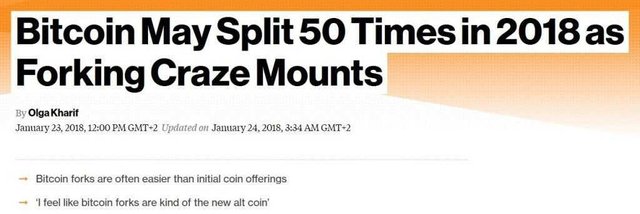
A recent Bloomberg headline indicates plenty more forks to come
It’s up to you to decide if the reward is worth the considerable effort required to claim these coins. Be aware that your financial privacy can only be harmed by this process, as data on your Bitcoin holdings will be revealed to various networks, exchanges, and services. However, the financial risks are minor, provided that you follow Rule #1…
Rule #1 when claiming Bitcoin forks (Extremely Important!)
Claiming all these forks will require you to use the private keys of the Bitcoin wallet which contained your BTC at the time when the coin forked. This is safe only if you’ve already moved your BTC to another wallet, with a different set of private keys.
Tip: now would be a good time to transfer your bitcoins to a hardware wallet (HW). If you already use a HW, consider getting a second one to maintain your security standard while claiming!
Secure Claiming Process Example
Let’s take Super Bitcoin (SBTC) for example. It forked on the 12th of December 2017 (at Bitcoin block height 498888). However many BTC you had in your Bitcoin wallet at that time, you now have just as many SBTC. To claim those forkcoins, it’s necessary to export the private keys from your Bitcoin wallet into an SBTC wallet or claiming tool.
But by sharing your private keys with that SBTC wallet or claiming tool, you’re giving it the keys to your crypto kingdom. If the software is malicious, it can drain any BTC which remain in your wallet! Any coin which lacks Replay Protection could also lead to the loss of any BTC in your original wallet.
As you can never be sure of new software, the only safe way to claim forkcoins is to first move all your bitcoins to a new wallet. Provided the BTC has been safely moved and can’t be harmed. The only danger that remains once this process is done is that a malicious fork wallet, tool, or service will use your old private keys to steal any other unclaimed forks.
Note: if you’re still using a Legacy Bitcoin wallet (with addresses starting with 1…), claiming these forks is an excellent motivation to move your coins to a SegWit wallet. Fees are low right now so there’s never been a better time to migrate your coins – doing so will reduce all your future transaction fees and prepare you to use the Lightning Network.
3 Important Aspects for profiting from Bitcoin forks
Once you’ve moved your coins to a new wallet, there are three major considerations for profiting from any fork:
Fork Height
This is the time and date (measured in Bitcoin block height) when the fork took place. Any address in a Bitcoin wallet which contained any value at the time of the fork will be eligible for forkcoin rewards. A Bitcoin address which received value after the fork won’t receive any forkcoins.
Reward Ratio
Forkcoins are often awarded in direct proportion to the amount of bitcoin in each address (e.g. 1.582 forkcoins for 1.582 BTC) but this ratio can vary. For example, Bitcoin World awards 10,000 BTW for every 1 BTC.
Exchange Deposit Availability
While forkcoin sites tend to advertise their partnerships with every exchange which might provide a market, in practice only one or two exchanges will allow deposits of minor forks. Unless you had BTC in an exchange wallet which was awarded forkcoins by the exchange itself, you’ll only be able to sell on exchanges which allow forkcoin deposits.
Some exchanges don’t allow you to deposit forkcoins from outside the exchange. Meaning, they will only allow you to trade forkcoins which they issued themselves to users who had BTC balance at the time of the fork. Exchange that allow outside deposits usually reflect the future price of the forkcoin more accurate. The example below shows you the difference in price between “open” and “closed” exchanges.

Price differences between closed and deposit-enabled markets (Exrates) are often extreme!
Note: in contrast to Western charting practices, Eastern exchanges often use the color red to denote rising prices and green or blue to indicate declining prices.
2018 Bitcoin Forks
We covered some of these forks ahead of time here. Now many of them are live! Here follows a list of claimable forks available for trading on at least one market. This data was accurate on the 6th of February 2018 but is subject to change.
Bitcoin Forks Claimable via BitPie / Bither and Ymgve’s Script
Super Bitcoin (SBTC)
Price
Market: Gate.io
Fork Height: block 498,888 (12/12/2017)
Reward Ratio: 1 SBTC for 1 BTC
Bitcoin Diamond (BCD)
Price
Market: Gate.io
Fork Height: block 495,866 (2/11/2017)
Reward Ratio: 10 BCD for 1 BTC
Bitcoin Faith (BTP)
Price
Market: BTCtrade.im (requires verification) & BitPie app
Fork Height: block 500,000 (18/12/2017)
Reward Ratio: 1 BTF for 1 BTC
Bitcoin World (BTW)
Price
Market: BTCtrade.im (requires verification) & BitPie app
Fork Height: block 499,777 (19/12/2017)
Reward Ratio: 10,000 BTW for 1 BTC
Bitcoin New (BTN)
(price available in BitPie exchange)
Market: BitPie app
Fork Height: block 501,000 (19/12/2017)
Reward Ratio: 1 BTF for 1 BTC
Bitcoin Forks Claimable via BitPie / Bither
Bitcoin Pay (BTP)
(price available in BitPie exchange)
Market: BitPie app
Fork Height: block 499,345 (15/12/2017)
Reward Ratio: 10 BTP for 1 BTC
Bitcoin Forks Claimable via Ymgve’s Script:
Segwit2X (B2X)
Price
Market: Exrates.me
Fork Height: block 501,451 (28/12/2017)
Reward Ratio: 1 B2X for 1 BTC
Bitcoin Hot (BTH)
Price
Market: ZB.com (requires verification)
Fork Height: block 499,777 (19/12/2017)
Reward Ratio: 1 BTH for 1 BTC
Bitcoin Pizza (BPA)
Price
Market: HB.top (requires verification, possibly restricted to China)
Fork Height: block 501,888 (31/12/2017)
Reward Ratio: 1 BPA for 1 BTC
Bitcoin Vote (BTV)
Price (/BCH)
Market: Coinex.com
Fork Height: block 505,050 (21/1/2018)
Reward Ratio: 1 BTV for 1 BTC
BitcoinX (BCX)
Price
Market: AEX.com
Fork Height: block 498888 (12/12/2017)
Reward Ratio: 10,000 BCX for 1 BTC
Fast Bitcoin (FBTC)
Price
Market: CoinEgg.com (verification required)
Fork Height: block 501,225 (27/12/2017)
Reward Ratio: 1 FBTC for 1 BTC
Note: to keep up with forthcoming and future forks of Bitcoin and altcoins, this exhaustive list on Bitcoin Talk is recommended. It lists all block heights but sadly trading markets aren’t noted.
Getting ready to claim Bitcoin forks – Step by Step
Step 1 – Exporting your Private Keys
To claim most forkcoins, it’s necessary to export the private keys from your old wallet using a format which the import tools (described below) can read. Please see your particular wallet’s documentation for instructions on how to export your private keys. In most cases, a file will be generated containing all your addresses and their respective private keys.
Certain wallets, especially hardware wallets, won’t allow you to export the private keys. In such cases, it’s necessary to enter your hardware wallet’s seed phrase into a tool such as Ian Coleman’s BIP39 Tool – which should be run offline. Another option is to import your seed into a compatible HD wallet such as Electrum.
The tool or wallet will regenerate the private keys and their addresses, allowing this info to be imported to the forkcoin in the correct format.
Step 2 – Check the Balance of your Addresses and Make a List!
To save time, don’t import private keys which contain no value. You may use the findmycoins.ninja and btcdiv.com sites to check the claimable forkcoin balance of your old Bitcoin addresses.
Record all valid address / private key combinations in a text file or spreadsheet for future reference. Use whichever type of file allows you to easily copy, paste and replace text. The recording format should be private key followed by the address.
Tip: also number each entry and note the approximate amount of Bitcoin they contained at the date of the earliest fork to which you’re eligible. Numbering each key pair will prove helpful for ordering purposes. Noting the sizes may prove also useful, e.g. to pull out the largest-valued address for rapid exchange funding or the smallest valued address for testing purposes.
2 Reliable “Do It Yourself” Claiming Methods
While it’s possible in most cases to download the official wallet of each forkcoin, then sync its blockchain and import your private keys, this method takes a lot of time to sync each chain and it’s possible that a wallet may contain malware.
There are two safer, faster methods available for claiming the current crop of forks.
- BitPie & Bither
BitPie & Bither are two Bitcoin wallets that when used together allows you to claim several fork coins including BTP, a coin which is otherwise impossible to sell. It doesn’t work with SegWit addresses (i.e. addresses that start with 3 and not 1) and has fairly high transfer / claiming fees.
We will use Bither in order to extract forkcoins and BitPie in order to sell them. There’s some partnership between these two wallets and it seems Bither will reject non-BitPie addresses when claiming. Bither is featured on the Bitcoin.org site so should be fairly reliable.
The Bither wallet is available for both mobile and desktop, whereas BitPie is best used on an Android device. Even though BitPie is also available for iOS there have been several reports of difficulties using that operating system.
If you don’t have an Android phone or would prefer to do everything on your personal computer, install the BlueStacks Android emulator. You’ll need a Google account to access the Google Play Store for purposes of installing BitPie (and Bither, if you so choose) within BlueStacks. You may be able to get around this requirement by downloading the .apk files.
BitPie has wallets and an exchange function for 6 new forkcoins; SBTC, BTW, BCD, BTF, BTP, and BTN (plus Bitcoin Cash and Bitcoin Gold). This exchange can be used to sell the forkcoins once claimed.
BitPie & Bither Claiming Process
For a quick overview of the process watch this tutorial (not recommended for first time users, use text version below instead):
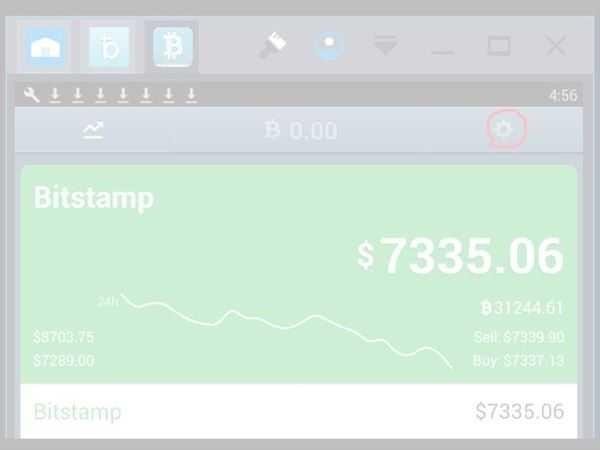
Open the Bither wallet, complete the setup process, backup your seed phrase and password, and then select the gear icon at the top right:
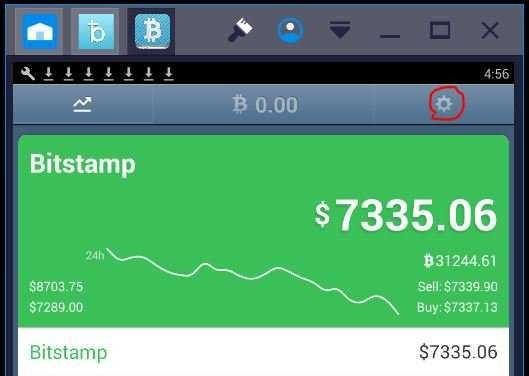
Select “Advanced Options”
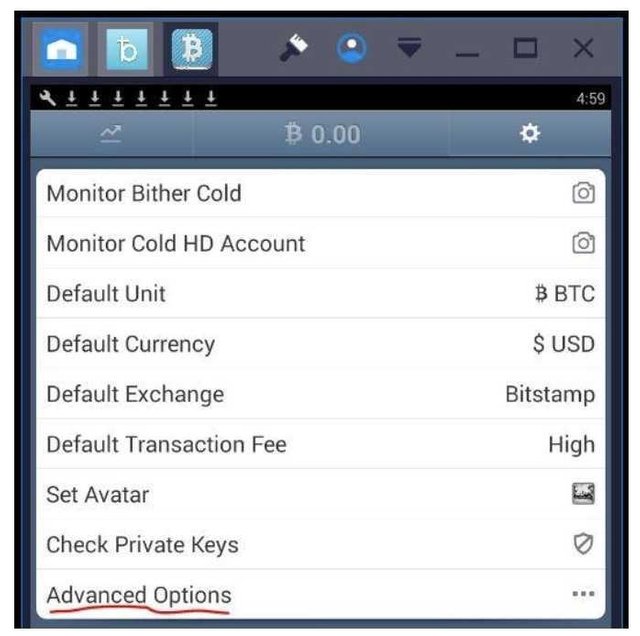
Paste your private key as text (which you should have obtained from Ian Coleman’s tool or your new wallet). Bither will ask for the password you set for it and whether to import the private keys in compressed or uncompressed format. Select compressed. Repeat this process for all private keys / address which contain a claimable balance.
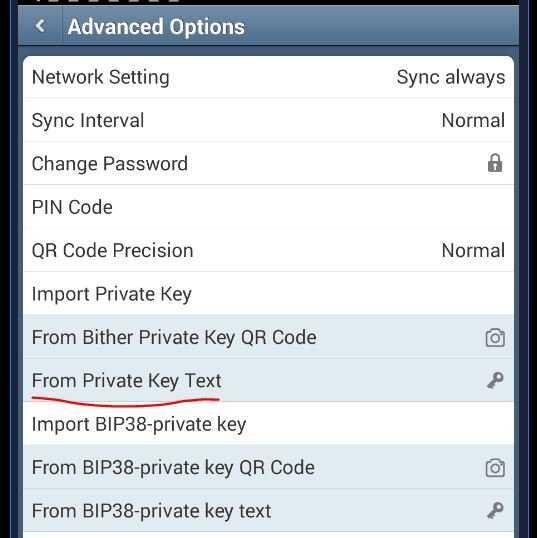
After importing all the relevant private keys, click “Get Fork Coins” in Bither:
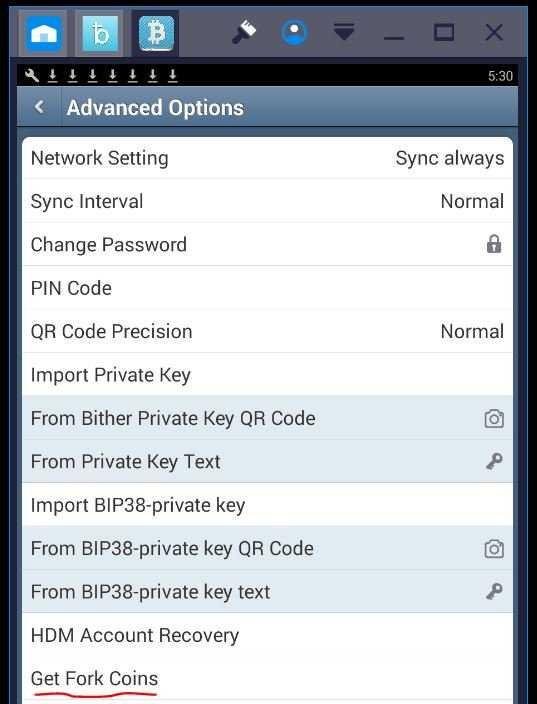
Select the forkcoin you wish to claim:
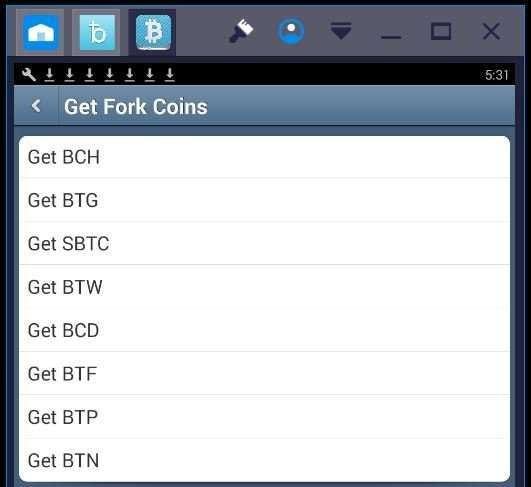
Here BCH has been selected. Addresses are displayed on the left and their claimable balance on the right. Already claimed addresses will be marked as “you already gat [sic]XXX.” Click all “Getable” balances:
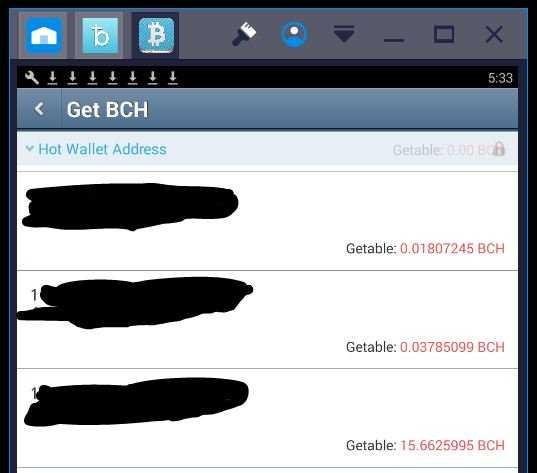
Bither will specifically request a BitPie address to send to
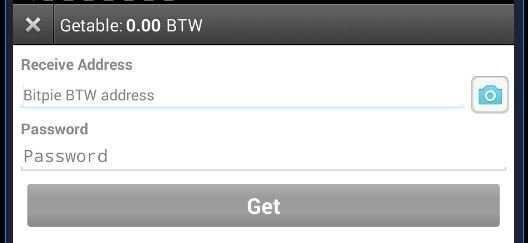
We need a BitPie address, so now open BitPie and complete the setup process and backup your seed and pass. You can switch between coins from the drop-down menu at the top left:
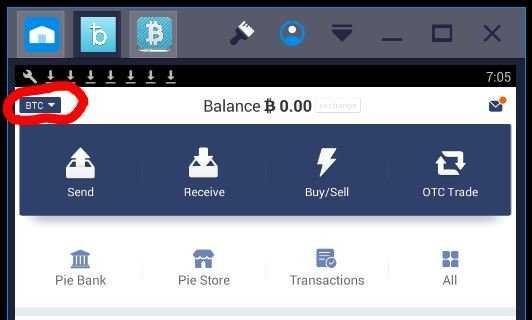
Here Bitcoin is selected. Navigate to whichever forkcoin you wish to claim within Bither and hit the “Receive” tab:

Clicking the address displayed below the QR code will copy it to the clipboard:
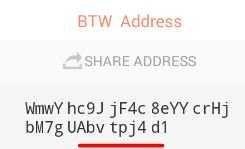
Go back to Bither, Enter the address and hit “Get”:
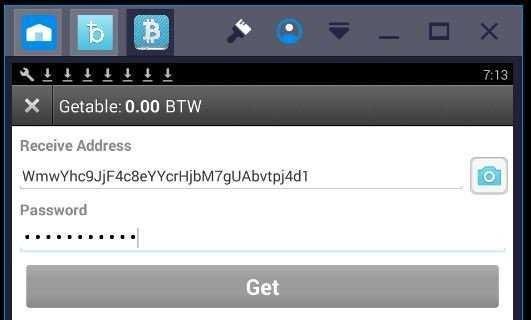
After a few seconds, you should get a notification from BitPie about incoming funds. Repeat the process from Step 6 (where you click “getable balance”) until all addresses are claimed.
Warning: BitPie’s UI is such that having the wrong coin selected is an easy mistake to make. Always double check that you’re using the correct type of coin to claim your receiving address.
- Ymgve’s Fork Claimer
Ymgve’s excellent script allows you to claim 12 new forkcoins (and Bgold): B2X, BCD, BCX, BPA, BTF, BTH, BTN, BTV, BTW, SBTC, UBTC (which requires some extra steps, as explained on the UBTC site) and FBTC (which has a slightly different claiming process).
Ymgve’s script also supports SegWit addresses, has lower mining fees than BitPie / Bither, and allows you to send to any address – so coins may be sent directly to your exchange deposit account. However, the script does require use of the command line and is a bit more complicated.
While the script apparently requires you to enter about 180 random characters for every address you claim, the workload can be greatly reduced with some judicious copy-pasting and replace-all’ing.
Ymgve’s Fork Claiming Process
First, visit the GitHub page. It will explain that you first need to install the Python 2 (not 3) programming language, which you may download here.
Next, download the script as a .zip file:

It’s easier to extract this .zip file into the same directory to which you installed Python 2. The cleaner method is to set a path to the Python directory.
Now, refer back to the list you made of claimable addresses. Look up each of these addresses using any Bitcoin block explorer and find the Transaction ID (txid) of the last transaction before forktime. Enter each txid into your list, above the private key. The format of your list should now look like this:
(Number)
(Amount)
TXID [obtainable from block explorer, last transaction before forktime]
Privkey
Source Bitcoin Address
Destination Forkcoin Address [deposit address, obtainable from exchange]
Above TXID, enter the following text: python claimer.py XXX (XXX is a substitute for the ticker code of whichever coin you wish to claim).
Ensure that your list doesn’t contain line breaks (“enters”), as these will cause the information to be entered over multiple lines when pasted into the script, causing the script to fail.
Here’s more or less what your list entries should look like, the parts to copy and paste having a colored background:

This list, so ordered, will save a great deal of time when entering commands for multiplea addresses and forkcoins into Ymgve’s claimer tool. Entering the necessary commands by hand will take forever and has a very high chance of error.

This is how the list should look in the end (notice that the amount is missing from this example)
Let’s get down to business. In Windows, do not run Python from its .exe file. Instead, launch a command window and navigate to the directory in which you installed the script. If you use Linux, you should have no trouble with this step.
Select the coin you wish to claim. Save your list using a file name which reflects the coin you intend to claim, e.g. scriptBCX.txt.
Use your text editor’s “Replace All” function to replace XXX with the coin’s code, e.g. XXX becomes BCH.
Use your text editor’s “Replace All” function to set the Destination Forkcoin Address to the correct one for depositing forkcoins on your chosen exchange. Ensure before doing so that you’re able to withdraw from the exchange without completing verification procedures! These procedures may fail or require info you’re unwilling to share, in which case your coins will be trapped.
Now highlight and copy (CTRL-C or right-click-copy) the following information from your list:
Python claimer.py BCX [or whichever supported coin ticker you’re claiming]
Privkey
Source Bitcoin Address
Destination Forkcoin Address
Right-click the command window and paste this information. If everything is correct, the script will ask you to confirm your command by entering the following text:
I am sending coins on the [relevant]network and I accept the risks
You may copy the above text for pasting purposes, as it will have to be entered again for every address you claim from. Alternately, if you’ve already entered the disclaimer, then pressing the up arrow should repeat it automatically.
Allow the script to run for a while. It will either fail, succeed (usually within a minute or so) or get stuck in a cycle of retrying connections. In the latter case, you may cancel the script (control-C in Windows) and move on. Note down what happened with each address, so that you may retry failed or stalled addresses later.
Move on down your list of addresses and private keys. Once you reach the end, save the file under the name of the next forkcoin you wish to claim, then replace-all the ticker codes and destination address.
Repeat as desired or until all your forkcoins are Bitcoin!
Consider sending Ymgve a tip for his excellent script, which he continues to improve. Here’s his Bitcoin address: 1HDW5sy8trGE8mEKUtNacLPGCx1WRtebnp
Note: the above process (which relies on a block explorer to fetch the transaction ID which denotes the address value) remains the same for all coins except FBTC. The process for FBTC doesn’t take a TXID value but requires you to enter the amount to claim in satoshis at the end. By noting down the values claimed by other coins with a similar fork height to FBTC’s, you should be able to enter the correct amount. Remember the eight digits after the decimal point!
Bitcoin Forks Claiming Services
If you don’t fancy the DIY approach, you can pay a percentage (usually around 5%) of your forkcoin profits to experts who’ll handle the process for you. This is the easy way but we can’t vouch for any of these services, having never used them. The ones listed here all seem to have received a lot of positive feedback. Besides CoinPanic, they’ll require your private keys.
Reddit user Camku can claim and sell just about anything and seems very helpful.
Nbysy is another Redditor who offers a forkcoin service and has good feedback.
CoinPanic is an interesting service which doesn’t demand your private keys for claiming.
Dig.Walleting.Services is another claiming service.
Loyce has a claiming service on the BitcoinTalk forum with a much positive feedback.
DIY vs. Claiming services – which should I use?
With a view to future forks, it’s probably worth getting familiar with all three types of services!
BitPie is fairly easy (although not without bugs and delays) and is currently the only way to sell the forkcoin known as Bitcoin Pay (BTP). Although the BitPie exchange usually has worse prices than regular exchanges, it doesn’t require any personal information. You should avoid storing funds long-term in the BitPie wallet as its security properties are unknown.
Ymgve’s script is excellent. You’ll probably extract the most BTC and education from using it. As it’s usually updated whenever a valid coin is released, it’ll probably be the quickest path to claiming and selling new forkcoins. It has low fees and supports many coins. However, it can be a little time-consuming and is perhaps tricky for newcomers.
The various claiming services can save you a lot of hassle and allow you to sell at various exchanges without the verification prices. However, these services take a percentage and require trust. Research each service or provider before using it! In the case of certain coins unsupported by the other 2 methods or only traded on an exchange you can’t access, a suitable service will be your only path to claiming forkcoins.
Selling your Forkcoins
Some forkcoins will likely pump in future, most will die… There’s no reliable way to predict either of these outcomes.
All the exchanges linked were honest in terms of allowing withdrawals, although problems are likely with these frequently buggy forkcoins… Almost all (apart from HB.top) have English language versions, with the button to select English usually lurking the top-right corner of the site. Note that the verification process is sometimes tedious, requiring multiple photos, document scans and jumps-through-hoops. Usually English explanation or support is lacking if the process fails.
Finally, as it’s not obvious, here’s how to access the exchange (don’t use the “Buy / Sell” or “OTC Trade” buttons in the top menu) in the BitPie wallet:
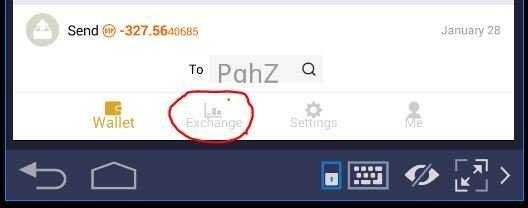
While this guide was pretty comprehensive I’m sure you may still have questions. If so, leave them in the comment section below and I’ll do my best to answer them. Happy forking!
Thanks for visiting my blog :)
welcome
WOW
Wonderful work
thanks